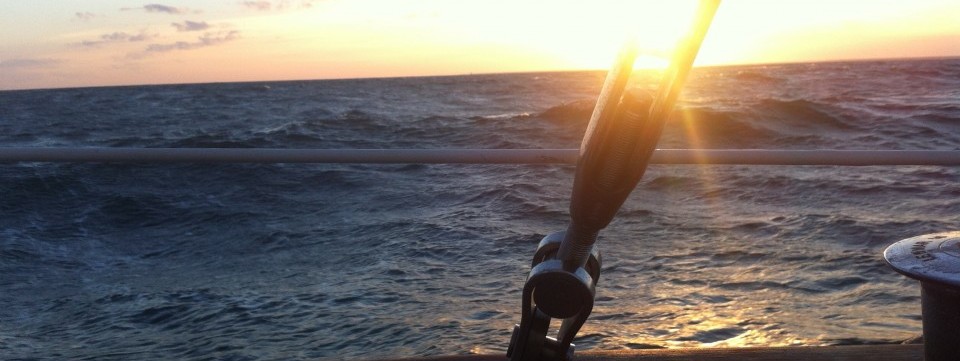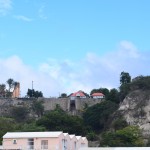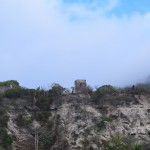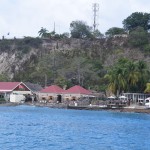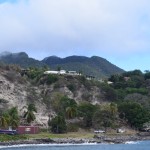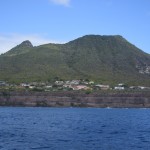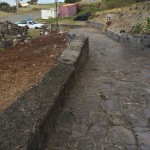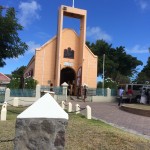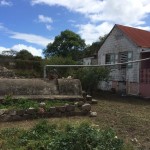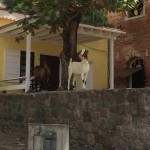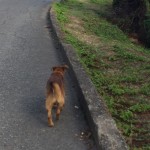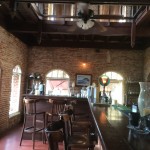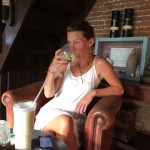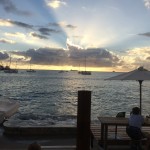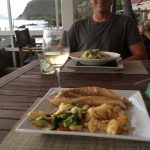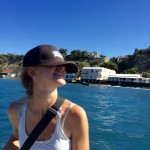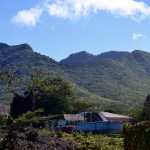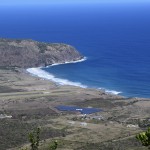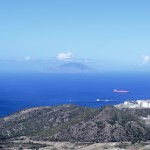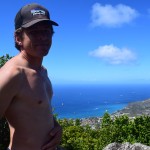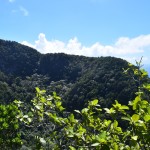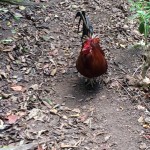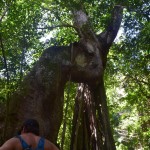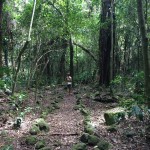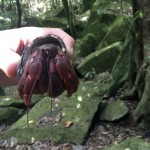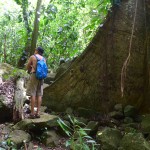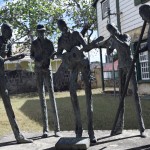Sailing from White House St. Kitts to Statia was an active sail. St. Kitts’ towering mountains forced the wind to funnel around the harbor at odd angles forcing sail changes every 30 minutes. Once we were in “open” water, the northerly swells hit us but we were still cruising along at 6.7 -7.1 knots.
I had my nose in a book so when I saw Statia (St. Eustatius) it was impressive. Straight from the coastline the island shoots straight up a few hundred feet. A slab of limestone greets you from the Southeast known as the White Wall. 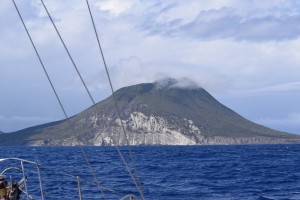
We came to Statia a bit hesitant since the anchorage is rather unprotected and subject to a “bumpy night” if there are sea swells from the North (which there was). Unfortunately, even with a stern anchor out, the rolls could not be ignored and were bothersome. Any trepidation I had for the anchorage left me the second we grabbed a mooring and I looked up at Oranjestad. This place was positively medieval and captured my attention.
- welcome gate
- Quill volcano
What makes the island so fascinating (to me at least) is the history. The Dutch island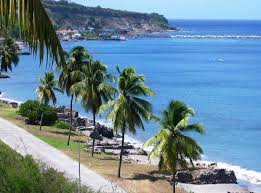 was an integral international trading post (duty free) between the 17-19 centuries.
was an integral international trading post (duty free) between the 17-19 centuries.
Hundreds of ships would dock/anchor in the bustling harbor ready to sell, barter, and buy between the Spanish, Dutch, English, and Americans (even during wartime periods). The coast looked very different back then with stone trading posts lining the harbor. “Their defense was their utility.” Even now, there are old stone foundations everywhere on this island.
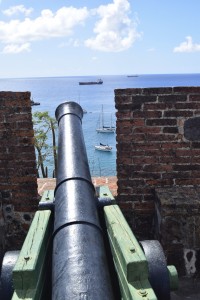 St. Eustatius was also the first to salute the United States as a sovereign nation (yay!). Back in the day when a ship came into port with it’s colors flying high they would shoot a few cannons to announce their arrival. The receiving port would fire back a friendly fire to welcome the new vessel. The greater number of canon shots the greater the respect for the nation and captain onboard. English hotshot, Admiral Rodney received word of the historic salute, and the British had enough of these “neutral Dutch” providing the enemy Americans with arms and provisions. Admiral Rodney attacked
St. Eustatius was also the first to salute the United States as a sovereign nation (yay!). Back in the day when a ship came into port with it’s colors flying high they would shoot a few cannons to announce their arrival. The receiving port would fire back a friendly fire to welcome the new vessel. The greater number of canon shots the greater the respect for the nation and captain onboard. English hotshot, Admiral Rodney received word of the historic salute, and the British had enough of these “neutral Dutch” providing the enemy Americans with arms and provisions. Admiral Rodney attacked 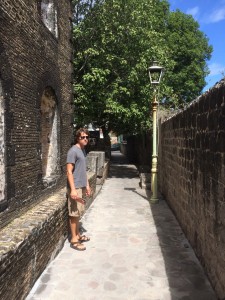 Statia and pilfered the lucrative trading port. It’s said Rodney was suspicious of his “loot” and noticed there was an oddly high amount of burials taking place. He ordered
Statia and pilfered the lucrative trading port. It’s said Rodney was suspicious of his “loot” and noticed there was an oddly high amount of burials taking place. He ordered
his men to open up the caskets only to find…. the towns riches being hidden below ground. As if that’s not enough, Rodney ransacked the Jewish quarters and noticed the people were heavily dressed. He sliced the pockets and hems of their coats. The Jewish townsmen had sewn their coins into the inseams of their clothing. Rodney got that too. What. A. Jerk. (Jewish quarter pictured right>)
- The slave path. Steep cobblestone path that lead straight from the docks to the main town center. Terrible history of this road
- Beautiful Sunday hymns were sang as we arrived
- town center
- capturing water.
- the goat herds were everywhere. loved these guys
- meet Bueno, our guide for the afternoon. He took us on a walk around the island for about an hour
- The Gin House
- great refreshing cocktails
- beautiful sunset
- and we didn’t leave for the afternoon
- dinghy-ing back to C/I customs and immigration. Welcome to the web of Dutch bureaucracy
- Hike to the Quill volcano
- Quill is Dutch for hole or pit
- vista from the tippy top of the cauldera
- looking over at Saba
- we climbed up thin root systems and gravel-dirt for this
- looking at the lip of the caldera, which formed 30,000 years ago
- bellicose rooster, kicking up dust and throwing boulders down at us
- inside, trees have been growing here for the past 1600 years
- lush rainforrest
- hermit crabs littered the forest floor
- hiking where ever we please
- folkband statue back in town
